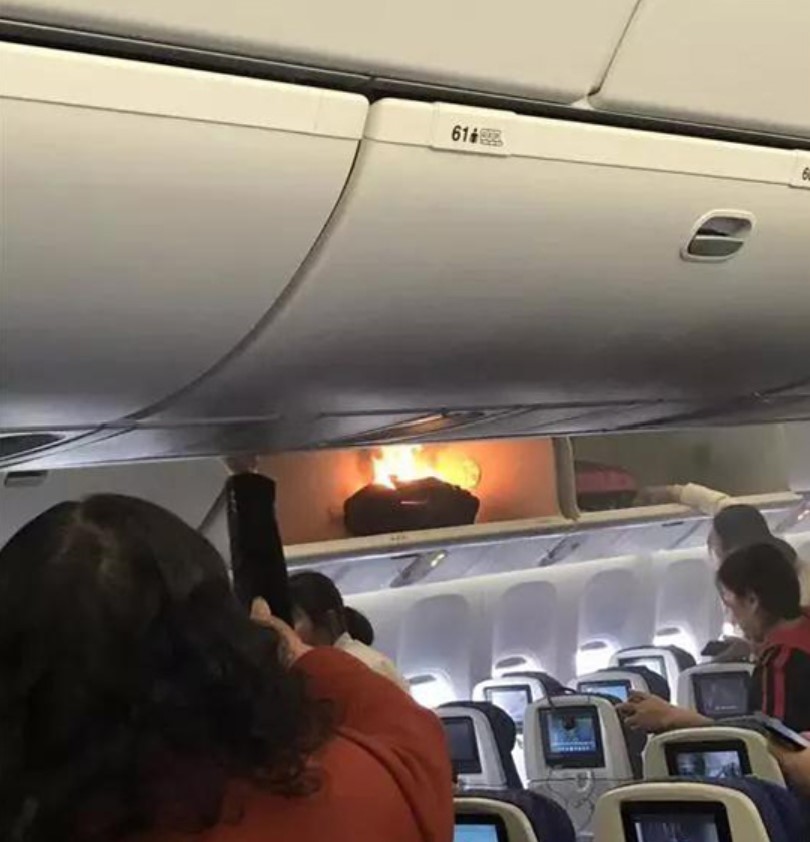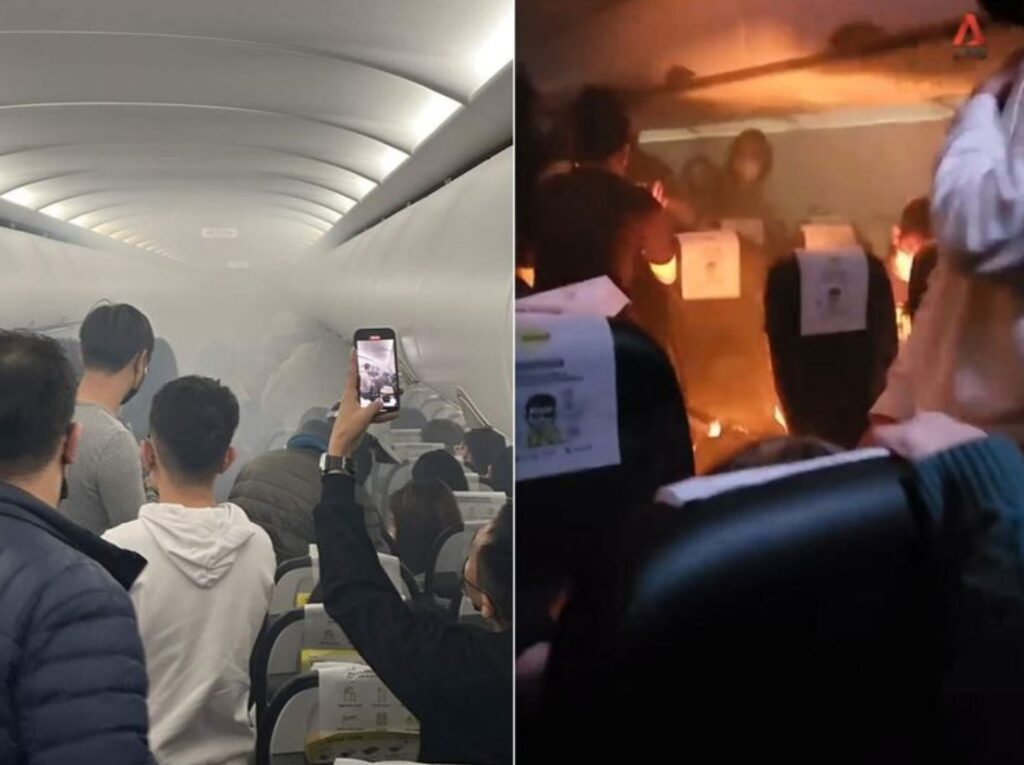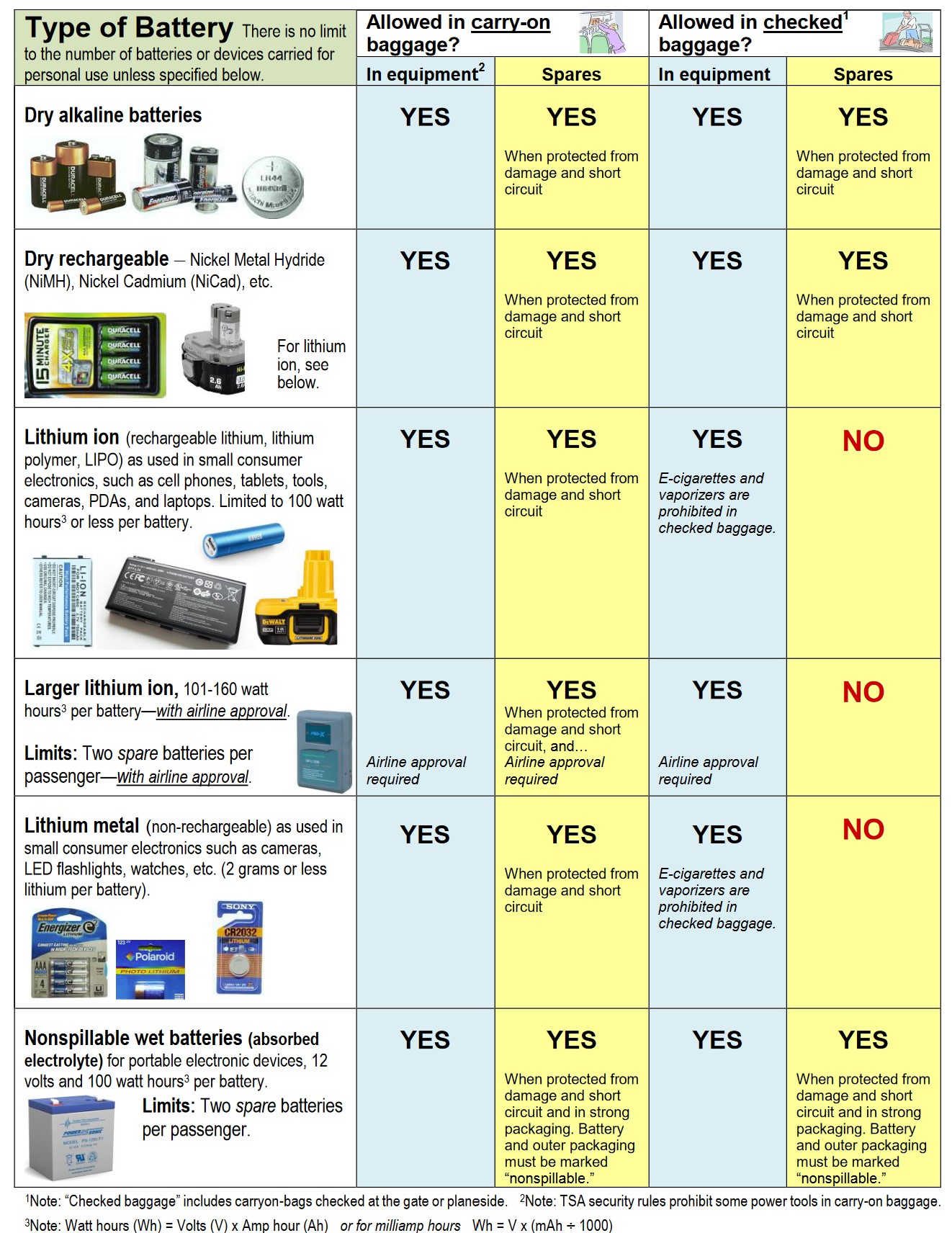Planes and power banks – FAA/TSA rules enforced (off-grid)

Planes and power banks – the rules are now strictly enforced following a slew of Lithium-ion battery recalls and fires. Any Lithium-ion battery over 100Wh cannot be carried as cabin luggage or in the cargo bay.
And slew it is – more than 60 Lithium-ion fires on US airlines alone in 2022, over 80 in 2023 and over 30 so far in 2024 from phones, laptops, power banks, and now Vapes. Some were extremely serious as passengers put these in the cargo as luggage.
The Federal Aviation Administration (FAA) and Transport Security Administration (TSA) set the rules that all airlines implement. The largest approved cabin (carry-on) baggage power bank is 100Wh (Watts for an hour—think of this as capacity—a bucket of energy). You can have up to two of these.
With airline approval (many will not), it may allow up to two Lithium-ion power banks from 101-160Wh as cabin baggage. Some airlines require dangerous goods labelling and not for inflight use. This capacity now includes newer laptops that may exceed 100Wh batteries. It also applies to appliances, tools, and other items with 100+Wh batteries.
Over that capacity, power banks are dangerous goods. Under no circumstances can Lithium-ion batteries be transported as cargo luggage.
See the FAA Batteries Carried by Airline Passengers Guide

How to calculate a power bank capacity
As a rule, power banks up to 25,000mAh (milliamp hour) are 100Wh or less. A 10,000mAh power bank is about 40Wh. Most modern power banks will have the Wh capacity printed on them.
For example, the Anker Prime 27650mAh 250W power bank A1340 – a marathon runner (currently the largest TSA-approved power bank), uses 3.85V x 3.95A x 15.2W x 7 cells = 106.45W. Even though it is slightly over the 100Wh limit, It has approval because it also uses safer and more expensive Li-Po pouch batteries with 2000+ charge cycles.
Please don’t get confused by the total watts it can concurrently output. The Anker example above shares a 250W output over its ports (a maximum of 100W per port). This has nothing to do with battery capacity.
CyberShack’s view – Planes and power bank rules are the tip of the Lithium-ion iceberg.
Lithium-ion power banks use multiple low-cost 186500 (18 x 65mm) or 21700 (21 x 70mm) cylinder batteries. These are the most energy-dense – more Wh from smaller batteries. This type of cell is a predominant cause of Lithium-ion battery fires.

Some more educated power bank makers realise that this cannot continue and are moving to Li-PO pouch batteries (enabling different designs from the typical power bank brick style) with far less propensity for thermal runaway. Anker’s Prime series (L) is evidence of that, but it is about 25%, thicker and heavier than the Lithium-ion equivalents (R)
The safest technology is Lithium Iron Phosphate (LiFePO4 or LFP). It has a lower energy density (it requires up to 50% more battery cells) but is highly safe with low toxicity. The better ones have 3000+ charge cycles. This technology is in better portable power stations, as size and weight are not so much an issue.
The Wh (Watt Hours) enforcement of planes and power banks is wise and long overdue. Imagine what a Lithium-ion thermal runaway (unstoppable) fire on a plane could do.
The UK Government has now banned e-mobility devices on trains, ferries and buses for the same reason.

Further reading
Large-capacity Lithium-ion batteries will end in death
Is there a safe way to charge Lithium-ion batteries?
Does insurance cover a lithium-ion battery fire? Maybe and probably not
Lithium-ion e-scooters, e-skateboards, and e-bikes banned on UK on public transport
This device costs over A$10,000 and is the only 100% Lithium-Ion fire containment system available.
Brought to you by CyberShack.com.au










